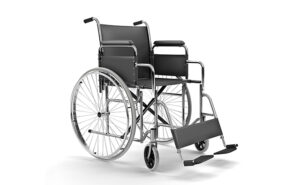
Photo: 26ISO/E+/Getty Images
When searching for signs of a bed bug infestation, meticulously inspect various areas where bed bugs may hide. In the bedroom, this includes examining seams, tufts and edges of headboards, as well as nightstands and behind pictures. Additionally, check mattress seams and edges, box springs, and upholstered furniture. Be careful, as the presence of signs does not necessarily indicate active infestations; it could be a resolved issue. Therefore, monitoring and confirming the presence of active infections is crucial, especially in places with a history of treatments.
Don’t forget to inspect carpet edges, floorboards, loose wallpaper, behind electrical outlets, phone plates, thermostats, doors and window frames.
Finally, thoroughly examine clothing closets and other dark, protected areas where bed bugs may seek refuge. Look for signs such as rusty or reddish stains caused by crushed bed bugs, dark spots resembling dots of excrement, tiny pale whitish eggs and eggshells, shed skins from growing nymphs, and the presence of live bed bugs themselves.
Wheelchair inspection list
As noted in our previous inspection article, wheelchairs can be particularly vulnerable to bed bug infestations. To ensure a comprehensive examination, place the empty wheelchair on a stable surface and follow these detailed steps:
- Examine seat cushion seams: Inspect the cushion(s) from all angles, including both inside and outside surfaces. Bed bugs often seek refuge in the folds and crevices of cushions, so pay particular attention to these areas.
- Examine seat and back upholstery: Check underneath the seat and back upholstery for any signs of bed bug activity. Lift the upholstery carefully to inspect the hidden areas where bed bugs may hide.
- Examine the wheelchair brake mechanism: Inspect the mechanism thoroughly, as bed bugs can conceal themselves in the nooks and crannies of mechanical components. Use a flashlight to illuminate these areas and look for any signs of infestation.
- Examine footplates and footrests: These areas provide dark and sheltered spaces where bed bugs may hide, so inspect them carefully.
- Examine the armrests: Finally, examine the armrests of the wheelchair for any indications of bed bug activity. Pay close attention to seams, crevices and folds where bed bugs may seek refuge.
Monitoring your progess
Your job is not done after a successful inspection and treatment, of course. Continuously monitoring for bed bugs after treatment is essential because of their elusive nature, which makes early detection and post-treatment evaluation challenging.
Sticky traps and interceptor traps have been successful in monitoring bed bugs, as they don’t fly or jump. Strategic trap placement near sleeping areas and suspected hiding spots, coupled with regular monitoring of any unusual new issues or population migration, is crucial for detecting infestations and ensuring treatment success. In locations with a history of bed bug infestations, supplementing thorough inspections with monitoring programs can streamline infestation management. Maintaining records is essential for effective communication, documentation, and decision-making processes.
Leave A Comment